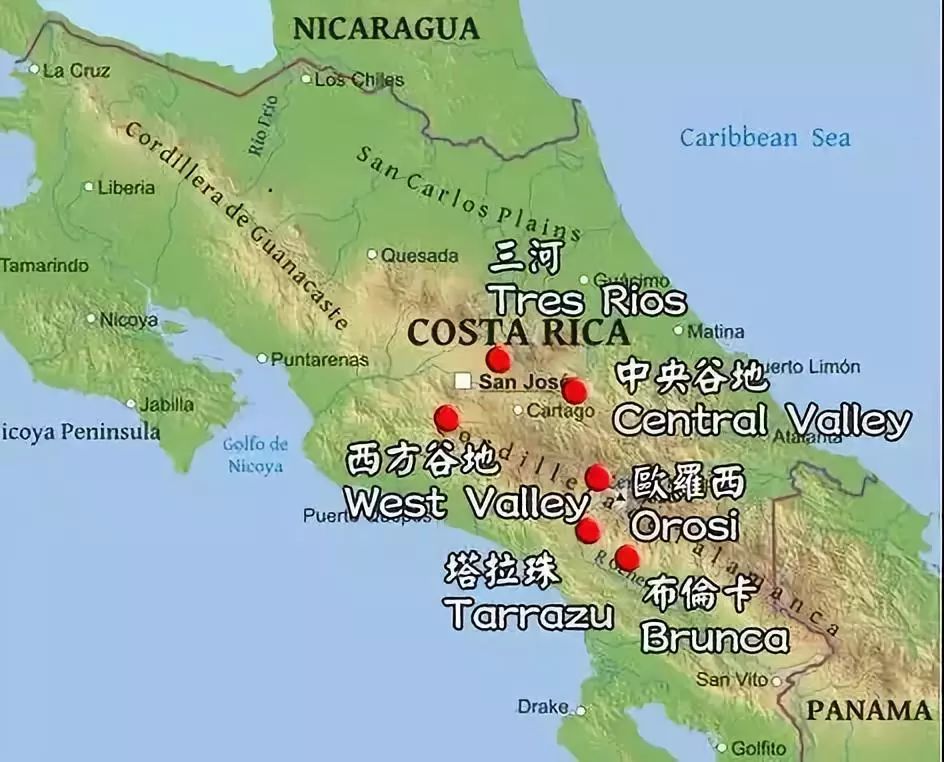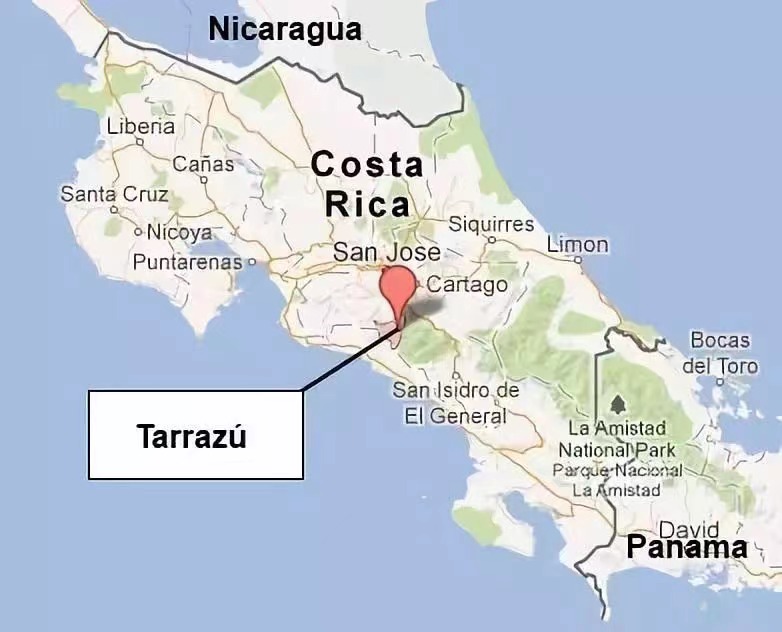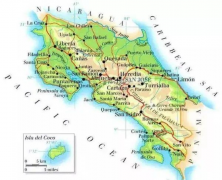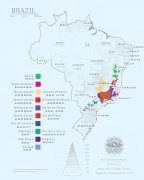Costa Rica Tala Beads Musicians Series Coffee Bean Taste Characteristics and Region Information Candle House
Costa Rican coffee
The flavor of Costa Rican coffee has always been very stable, soft and balanced to drink. It has both sour, sweet and bitter aroma, which is the classic flavor of coffee. The coffee industry in Costa Rica started very early, and coffee began to appear in Costa Rica in 1729, when it was introduced from Cuba. The first coffee was shipped to Colombia and Chile in 1820. In 1832, the local government promulgated a law that "there is land for growing coffee", meaning that coffee farmers can own the land directly if they grow coffee on any land that is not occupied. This policy has encouraged many people to grow coffee and promote the development of coffee, which has led to the fact that most of Costa Rican coffee comes from private estates. In 1854, with the help of William Lyon, captain of the British merchant ship, William Lyon, an importer and exporter successfully shipped 100 pounds of coffee to London, which was praised by British aristocrats as the golden bean from Costa Rica. since then, coffee has become the main cash crop of Costa Rica and changed the humble status of the former Spanish colonies.

Different producing areas will produce different flavors. If we want to pursue different flavors of coffee, we need to know the relevant information about different producing areas.
There are eight Costa Rican coffee producing areas, namely: West Valley in the western valley, Central Valley in the central valley, Tarrazu in Tarasu, Tres Rios in Sanhe, Orosi in Europe, Brunca in Brenka, Duli Alba Turrialba and Guanacaste in Guanacaster.
Tarrazu (Tarazhu): coffee is planted at an altitude of 1300-2000m.
Tres Rios (Sanshui River): coffee is planted at an altitude of 1400-1800m.
Valley Central Occidental (Western Valley): coffee is planted at an altitude of 1200-1650m.
Valley Central (Central Valley): coffee is grown at an altitude of 1200-1600m.
Orosi (Eurosi): coffee is grown at an altitude of 900-1200 m.
Brunca (Bronka): coffee is grown at an altitude of 800-1200m.
Turrialba (Duli Alba): coffee is grown at an altitude of 600-900m.
Tarasu (Tarrazu) is one of the major coffee producers in the world. Its strict quality makes it one of the most valued coffee producing areas.
Here, let's focus on the Tarasu producing area.

At 1200-1700 meters above sea level, the producing area is from December to March, with smooth taste and bright acidity.
Representative Coffee: Costa Rican musician series [Bach Coffee beans] [Beethoven Coffee beans] [Mozart Coffee beans] [Chopin Coffee beans]
Mozart, Carnett Manor, Costa Rica
Producing area: Tarazhu
Variety: Kaddura, Kaduai
Altitude: 1950
Treatment: raisin honey treatment
Flavor: sweet osmanthus, berries, fermented wine, raisins
Costa Rican Carnett Manor musicians Beethoven Series
Producing area: Tarazhu producing area (Tarrazu)
Manor: Carnett Manor (Finca Canet)
Variety: Huang Kaduai (Yellow Catuai)
Altitude: 1900m
Grade: very hard bean SHB
Treatment: washing
Flavor: citrus, black tea, caramel
The meaning and rules of the name of Costa Rican coffee raw bean:
The method of dealing with the graded names of national producing areas
Costa Rican Carnett musician series Bach
Country: Costa Rica
Producing area: Tarazhu
Altitude: 1950m
Treatment: raisin honey treatment
Grade: very hard bean SHB
Variety: Kaddura
Flavor: tropical fruit, nut, cream, fermented fragrance
In addition to the musician series, there are other producing areas of coffee in Front Street, such as blueberries from Stonehenge Manor in Brunka, southern Costa Rica, which are treated with anaerobic honey, where the soil is a mixture of red mud and plaster to form beans with high density and high sweetness. It shows blueberry fudge and fermented aromas.
Candle Manor in Costa Rica (Tara Zhu) is also famous for its coffee beans.
Small Candle Manor is the award-winning manor of CoE in Costa Rica. Costa Rican rose summer coffee beans are relatively young in the manor, but also because of different soil and water customs and microclimate, produce different Costa Rican rose summer coffee flavor, but also exquisite. The acid is rich and the tail rhyme is long. With distinct aromas of almonds, plums, citrus, sweet flowers and berries. La Candelilla, translated as "Little Candle", is named after the fireflies that light up a nearby stream on a summer night.
Important Notice :
前街咖啡 FrontStreet Coffee has moved to new addredd:
FrontStreet Coffee Address: 315,Donghua East Road,GuangZhou
Tel:020 38364473
- Prev

The flavor and taste characteristics of Costa Rican coffee beans and its growing environment music series Beethoven
With the popularity of boutique coffee in Costa Rica, coffee from Costa Rica has been well received in the domestic single-product coffee bean consumption market. With strong aroma, bright acidity and high comprehensive quality, he once became one of the famous representatives of Central American coffee. Today, let's give a brief introduction to Costa Rican coffee from the environment and development history of Costa Rican coffee cultivation.
- Next

Introduction to the treatment and grading of coffee beans in Brazil the taste and flavor characteristics of Huangbourne in Queen's Manor
When it comes to Brazilian coffee beans, many people don't seem to have much impression, but Brazil is actually a very important part of making espresso beans. Brazilian coffee is the largest coffee producer and the most complete coffee production base in the world. it is slightly bitter and smooth in the fragrance. He is not only the largest coffee producer, but also the second largest coffee consumer.
Related
- Detailed explanation of Jadeite planting Land in Panamanian Jadeite Manor introduction to the grading system of Jadeite competitive bidding, Red bid, Green bid and Rose Summer
- Story of Coffee planting in Brenka region of Costa Rica Stonehenge Manor anaerobic heavy honey treatment of flavor mouth
- What's on the barrel of Blue Mountain Coffee beans?
- Can American coffee also pull flowers? How to use hot American style to pull out a good-looking pattern?
- Can you make a cold extract with coffee beans? What is the right proportion for cold-extracted coffee formula?
- Indonesian PWN Gold Mandrine Coffee Origin Features Flavor How to Chong? Mandolin coffee is American.
- A brief introduction to the flavor characteristics of Brazilian yellow bourbon coffee beans
- What is the effect of different water quality on the flavor of cold-extracted coffee? What kind of water is best for brewing coffee?
- Why do you think of Rose Summer whenever you mention Panamanian coffee?
- Introduction to the characteristics of authentic blue mountain coffee bean producing areas? What is the CIB Coffee Authority in Jamaica?

